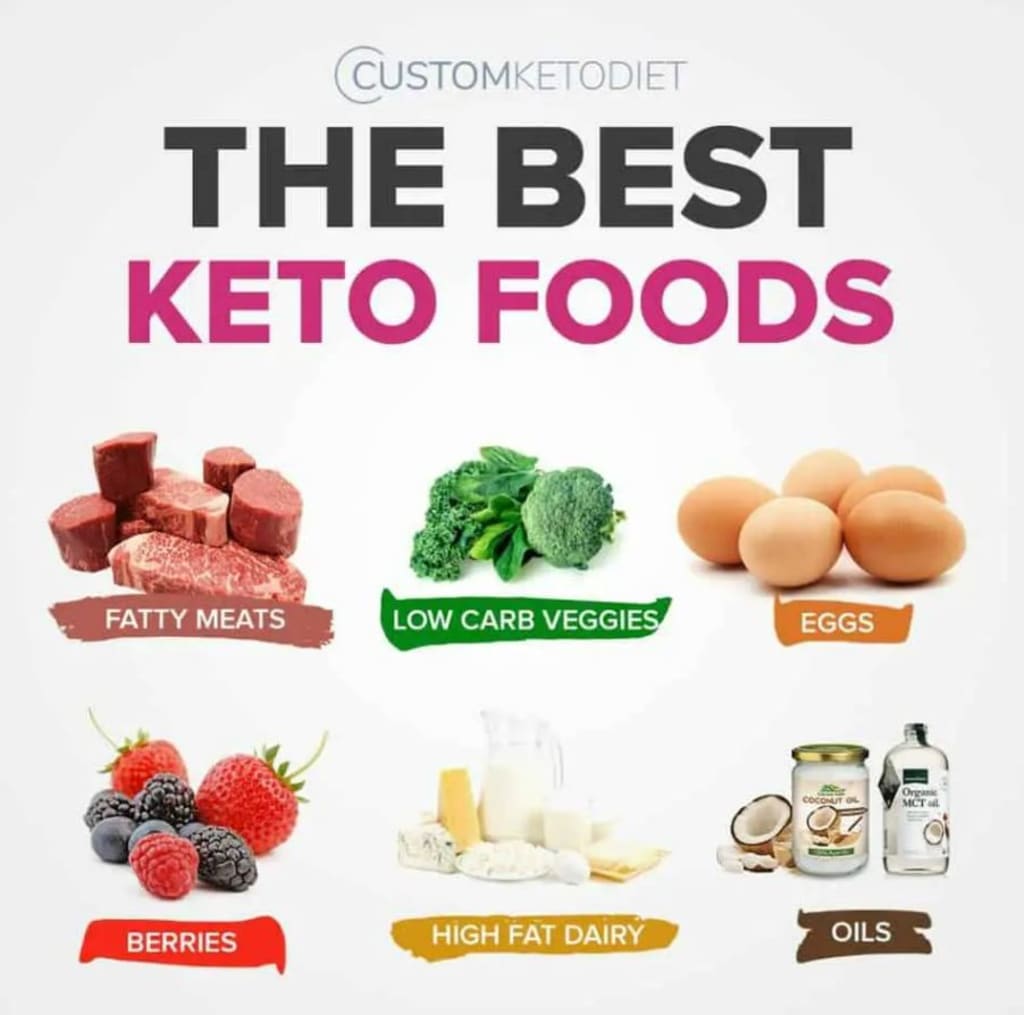
Following a keto diet requires careful planning and preparation. Here are the top 5 ways to create a keto meal plan:
Determine your daily macronutrient needs
The first step in creating a keto meal plan is to determine your daily macronutrient needs. This will help you determine the amount of fat, protein, and carbohydrates you should be consuming each day. Most people following a keto diet aim for 70-75% of calories from fat, 20-25% from protein, and 5-10% from carbohydrates.
Choose keto-friendly foods
When creating your meal plan, choose foods that are low in carbohydrates and high in healthy fats. This includes foods such as meats, fish, eggs, low-carb vegetables (e.g., spinach, broccoli, cauliflower), avocados, nuts and seeds, and healthy oils (e.g., olive oil, coconut oil, avocado oil).
Plan your meals in advance
Planning your meals in advance can help ensure that you are meeting your daily macronutrient needs and staying within your carbohydrate limit. Meal planning also helps you avoid impulsive decisions, which can lead to consuming foods that are not keto-friendly. Start by planning your meals for the week, and then make a grocery list of the ingredients you will need.
Meal prep
Meal prep is another important aspect of following a keto diet. It involves preparing meals in advance so that they are easy to grab and go during the week. Meal prep can include prepping ingredients (e.g., chopping vegetables, cooking meat) or preparing full meals that can be reheated later.
Use keto meal planning tools
There are several meal planning tools available that can help you create a keto meal plan. These tools can help you calculate your daily macronutrient needs, generate meal plans, and provide recipe ideas. Some popular keto meal planning tools include KetoDiet App, MyFitnessPal, and Carb Manager.
Get the Ultimate Keto Diet Plan here
In conclusion, creating a keto meal plan requires careful planning and preparation. By determining your daily macronutrient needs, choosing keto-friendly foods, planning your meals in advance, meal prepping, and using keto meal planning tools, you can set yourself up for success on a keto diet.
These are some additional information you may need to know:
Set macro goals: Determine your daily macronutrient needs based on your body weight, activity level, and goals. Generally, on a keto diet, you aim to consume 70-80% of your calories from fat, 20-25% from protein, and less than 10% from carbohydrates.
Choose whole, nutrient-dense foods: Focus on eating whole, nutrient-dense foods like meat, poultry, fish, low-carb vegetables, nuts and seeds, and healthy fats like avocado, coconut oil, and olive oil.
Plan your meals in advance: Planning your meals in advance can help you stay on track and avoid temptation. Look for keto-friendly recipes online or in cookbooks and create a meal plan for the week.
Use keto meal delivery services: If you don't have the time or energy to plan and prepare your meals, consider using a keto meal delivery service. Many companies offer pre-made, keto-friendly meals that are delivered to your doorstep.
Meal prep: Spend a few hours each week prepping ingredients and cooking meals in advance. This can save time and make it easier to stick to your keto diet.
Incorporate intermittent fasting: Intermittent fasting is a popular strategy on the keto diet that involves restricting your eating window to a set number of hours each day. This can help you get into ketosis faster and may have additional health benefits.
Experiment with different recipes: Don't be afraid to experiment with different keto recipes to find meals that you enjoy. There are many creative ways to make keto-friendly versions of your favorite foods, like pizza, tacos, and even desserts.
Use tracking apps: Use tracking apps like MyFitnessPal or Carb Manager to track your daily intake of macronutrients and ensure you are staying within your daily goals.
Snack wisely: Choose keto-friendly snacks like nuts, seeds, cheese, and low-carb vegetables to keep your hunger at bay and avoid derailing your diet.
Listen to your body: Pay attention to how your body feels and adjust your meals accordingly. If you're not feeling satiated, try adding more healthy fats to your meals. If you're feeling bloated or sluggish, consider reducing your intake of certain foods.





Comments
There are no comments for this story
Be the first to respond and start the conversation.